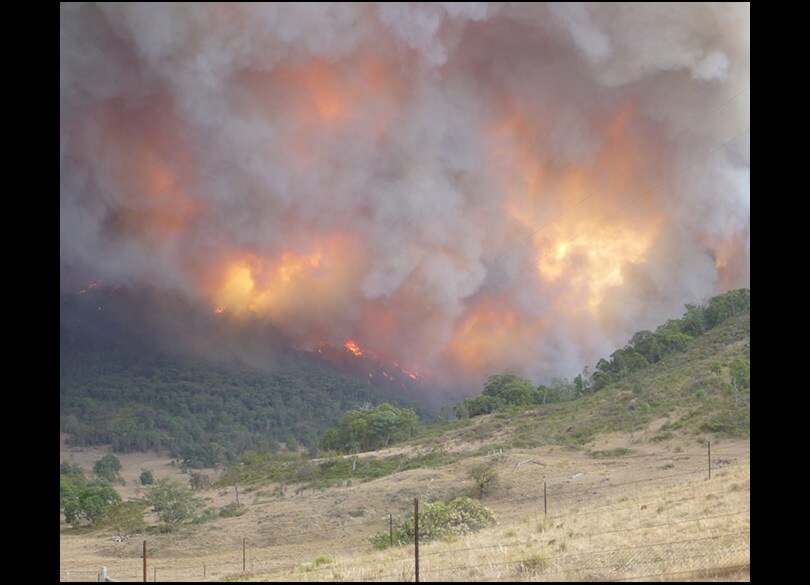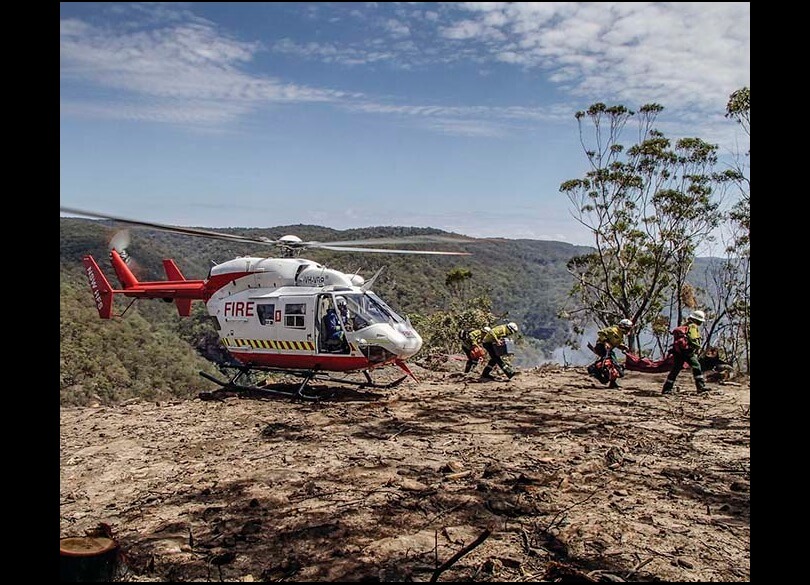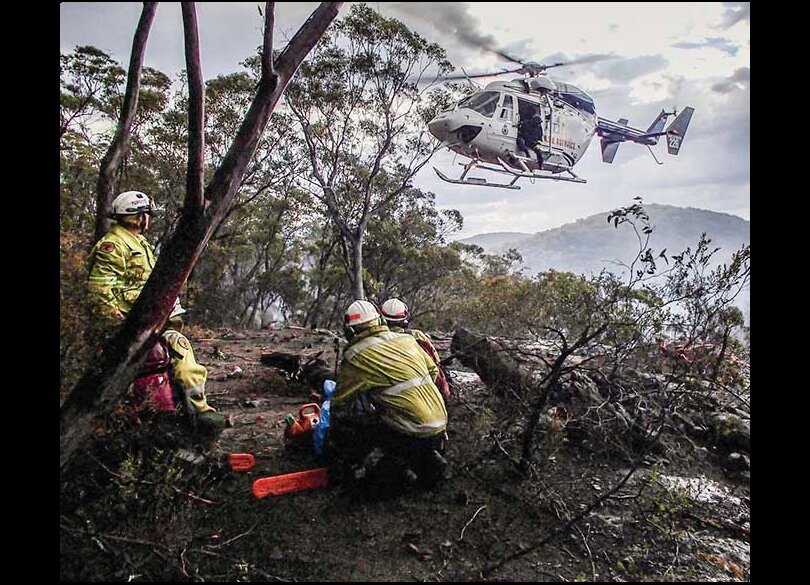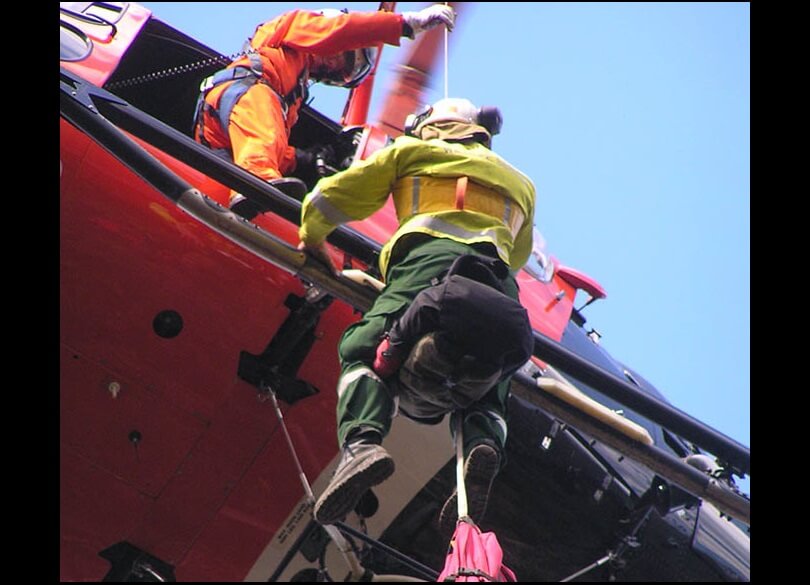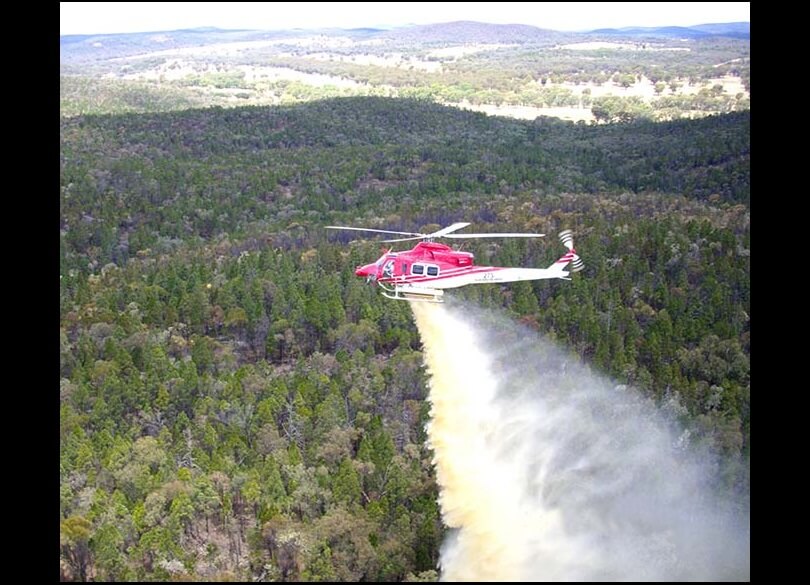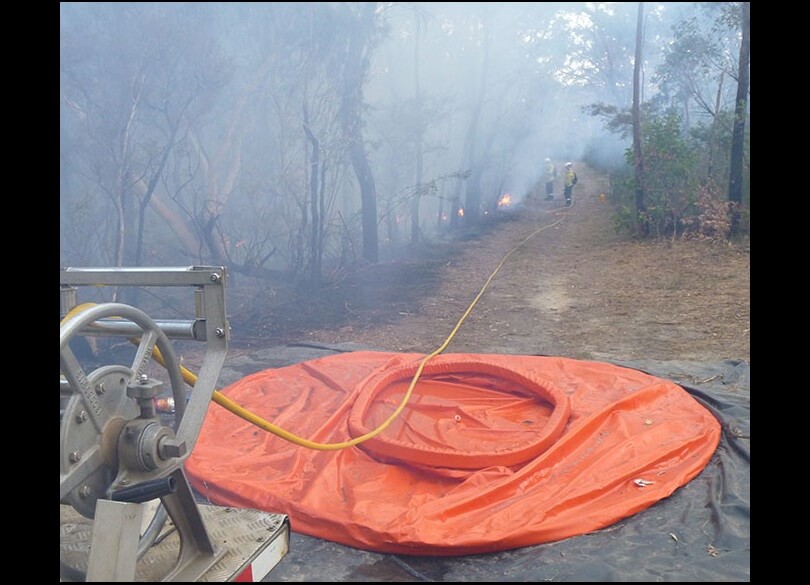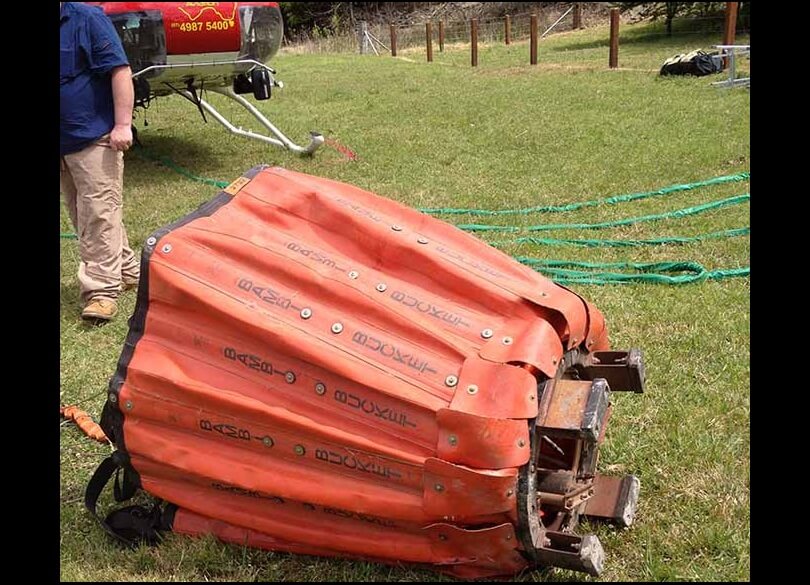NPWS has a strong record of rapidly responding and containing bushfires within its boundaries. On average, NPWS has contained 85% of all bushfires that started on park within reserve boundaries.
This is largely due to effective cooperative arrangements, a responsive detection and suppression capability, specialised response teams, and successful strategic hazard reduction programs.
NPWS staff are highly trained to respond to bushfires. To enable staff to respond effectively to bushfire incidents they attend:
- fire, incident and aviation training courses
- annual training, skills and fitness recertification programs.
During the fire season, key NPWS staff work at the NSW Rural Fire Service State operations centre to help coordinate firefighters.
Fire suppression methods
Fire suppression involves all actions undertaken to contain and control fire, from the time a fire is detected until it is extinguished and declared ‘out’.
Strategies used to suppress bushfires include:
- direct and indirect attack
- backburning
- use of earthmoving equipment
- use of fire suppression chemicals.
More than one strategy may be used to respond to and control a bushfire. The choice of strategy depends on:
- prevailing seasonal conditions and forecast weather
- predicted fire behaviour
- firefighter safety
- assets and values at risk
- financial cost
- the impact of strategies on biodiversity and cultural heritage.
Ground crews can directly contain and suppress a fire front using water and hand tools. This depends on the size and intensity of the fire and the terrain it is in. NPWS firefighters are expert at using dry firefighting: methods of fire suppression that do not rely on water being available.
Our highly trained remote area fire teams (RAFTs) use helicopters to reach otherwise inaccessible areas to quickly extinguish fires. NPWS is a world leader in developing this method of fire suppression.
As part of the NPWS Bushfire Management Program, dedicated rapid aerial response teams (RARTs) are placed on standby in high-risk locations during the fire season so they can reach fires quickly.
NPWS has a dedicated aviation unit and fleet of aircraft to assist with fire management. The fleet includes 5 helicopters and 2 fixed-wing aircraft.
NPWS helicopters are used to:
- transport and winch fire crews onto the ground
- provide operational support for crews on the fireground
- identify hotspots using infra-red sensors
- undertake reconnaissance
- provide air-attack supervision, command or observational platforms
- undertake aerial ignition and water bombing.
NPWS use fixed-wing aircraft to:
- detect fires
- undertake reconnaissance of fire behaviour and boundaries (using a thermal imaging camera)
- transport fire crews from various parts of New South Wales
- provide a platform for airborne radio repeaters (by using a radio receiver and transmitter to retransmit two-way radio signals over long distances)
- provide a command or observational platform.
Large air tankers have been used in New South Wales since 2015. A lead plane, coordinated by NPWS and NSW Rural Fire Service, is used to identify the flight path and targets for the tankers.
Backburning is a tactic used to control and contain bushfires. It involves igniting another fire to consume fuel in the path of the main fire. Backburning is an effective fire suppression tactic that can be cost effective. It is also environmentally sustainable as the bush can recover from this practice.
A backburn is usually lit from a secure control line and allowed to burn towards the main fire. A control line is a barrier that blocks the spread of a fire. It can be an existing feature of the landscape such as a river, lake or road or a barrier created by firefighters. A manmade control line is a strip of ground that has been dug up, burned out or otherwise cleared of fuel ahead of a fire's advance.
A backburn is conducted only when both fuel and weather conditions are suitable to contain the burn. This may be at night when it is cooler and more humid, after a wind shift or lull, or after a cool change.
Earthmoving equipment, such as bulldozers, tractors and graders, can be an effective way of rapidly constructing fire control lines.
Use of this equipment can cause damage to the environment including soil erosion, damage to natural and cultural heritage and the translocation of weeds and pathogens. Conditions apply to the use of earthmoving equipment within national parks to maintain conservation values and meet environmental legislative requirements. Immediately after a fire, NPWS carries out remediation work to ensure that no permanent harm is done.
The 2 types of chemicals used to suppress fires are retardants and foams. Retardants decrease the flammability and availability of fuels. Foams increase the effectiveness of water as an extinguishing agent. Foams are meant for immediate use on active flames. Salt wateris also classed as a fire suppression chemical because of the potential negative environmental impact it can cause if used in fire suppression.
Retardants (long-term suppression)
Retardant compounds are composed of ammonium phosphate or ammonium sulphate. They are usually used for parallel and indirect attack on fires and are applied by fixed-wing aircraft and/or large air tankers. They limit the spread of low intensity sections of a fire.
Foams (short-term suppression)
Foaming agents contain products similar to those found in household detergents. Foam surfactants aid direct attack operations by expanding water droplets, coating fuels to starve a fire of oxygen, increasing insulation, remaining on fuel surface longer and penetrating deeper into the fuel layer.
Salt water
Salt water is occasionally used for water bombing operations in reserves along the coast and estuaries. The negative impact of salt water on the environment increases the further the location is from the coast. This is because the further plant and animal communities are from the coast, the less tolerant they are of salt.
The environmental impacts of fire suppression chemicals are minimal, and we try to limit the use of chemicals near water courses.
All fire management operations need to be evaluated to avoid or minimise adverse impacts on the environment on NPWS-managed lands. Threatened species, populations and communities, and water catchments are given special consideration.
Fire may have a positive impact on native vegetation. Where a vegetation community has not burnt for a considerable time and plants are aging and deteriorating, NPWS may decide to allow this area to burn up to defined control lines, rather than contain the fire to a smaller area. This is only allowed where the risk to life and property is minimal.
NPWS work to conserve a broad range of cultural heritage items within national parks and reserves.
Aboriginal heritage in national parks and reserves is protected and includes Aboriginal sites and artefacts, landscapes with physical evidence of Aboriginal cultural practices, natural landforms, sites of spiritual or ceremonial significance, native plants used in bush foods and medicines, and animals including totem species.
Cultural sites of significance are identified in fire management strategies which are used to guide fire suppression operations. During fires in reserves of high cultural significance, our cultural heritage conservation officers are consulted to ensure the protection of these assets from fire suppression operations. Post-fire rehabilitation is also undertaken where required.
